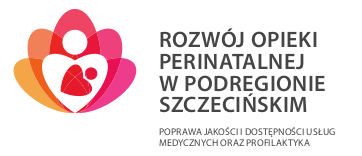ASSESSMENT OF PREMATURE INFANT’S DEVELOPMENT
Infants born preterm, i.e. before the 37th week of pregnancy, constitute a group of children facing an increased risk of irregular development. The problem chiefly concerns children with body mass below 1500 g. Once they leave the hospital, it is necessary to prevent complication related to premature birth (cerebral palsy, hydrocephalus, retinopathy, bronchopulmonary dysplasia, deafness) through proper monitoring at specialist clinics, development stimulation and early rehabilitation. Infant’s assessment after their discharge from hospital involves:
- Somatic development – we assess the child’s overall health condition, growth and its trend based on adequate growth charts (body mass, length, head circumference, and chest circumference). It needs to be remembered that a premature infant’s development is assessed in accordance with the so-called adjusted age. We calculate it by deducting the weeks missing to the term of delivery from chronological age (weeks of pregnancy). In case of premature infants who are extremely immature, the phenomenon of catching up to the growth process of general population occurs about the 18th – 36th month of life.
- Neurological evaluation – in accordance with recommendation of the attending physician from the hospital (typically in the 40th week of adjusted age).
- Sight assessment – ophthalmological examination is required at the 4th, 8th and 12th week of age.
- Hearing assessment – examination of auditory evoked potential from the brain stem.
- Speech assessment.
- Assessment of psycho-motor development on the basis of the Brunet-Lezine test, the Bayley Scale of Infant Development II, the scale of Munich Functional Development Diagnostics, Gesell’s developmental scale, Vojta’s method, NDT Bobath.
- Screening examination at 3 months of age (blood cell count including blood smear, urinalysis, cranial and hip joints ultrasound scans.
The so-called milestones are used to help in the assessment of developmental achievements. However, one needs to bear in mind that we need to verify the time of acquired skills taking into consideration the adjusted age referred to above.
MILESTONES CONCERNING MOTOR DEVELOPMENT
| Skill (milestones) | Time of skill acquisition | Average time |
| Sits on its own for a while | 4-8 month | 5.3 month |
| Turns over from back onto the stomach | 5-10 month | 6.4 month |
| Sits up securely when seated | 5-9 month | 6.6 month |
| Sits up on its own | 6-11 month | 8.3 month |
| Pulls itself up to a standing position | 6-12 month | 8.6 month |
| It is crawling | 9-12 months | 10.8 month |
| Stands on its own | 9-16 month | 11.0 month |
| Takes 3 steps on its own | 9-17 month | 11.7 month |
MILESTONES CONCERNING THE DEVELOPMENT OF SPEECH AND SOCIAL CONTACTS
| Subsequent skills | Time when the skill appears |
| Responds with a smile to a smile | 2-3 month |
| Laughs out loud and babbles (aa, guu, de) | 4-5 months |
| Babbles pronouncing syllables, e.g. ma-ma without comprehension | 7-8 month |
| Pronounces the first two-syllable words with comprehension, e.g. ma-ma, ba-ba | 9-11 month |
| Mimics actions, e.g. bye-bye | 9-10 month |
| Pronounces the first 2 or 3 two-syllable words, e.g. mama, daddy, granny | 12-16 month |
| Can say about eight words, signals physiological needs | 18-24 month |
Continuity of care over a prematurely born infant is crucial. Thanks to comprehensive, specialist observation it is possible to follow the dynamics of change and to determine any irregularities in the development. This, in turn, enables planning a suitable form of treatment, rehabilitation support.
Prepared by: Izabela Chwiłkowska




